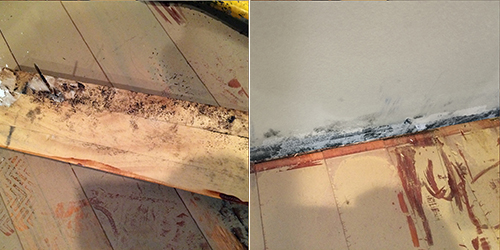How to Help Prevent Water Damage in Your Bathroom
How to Help Prevent Water Damage in Your Bathroom
Blog Article
Just how do you actually feel in regards to How to Repair and Prevent Bathroom Water Damage?

The shower room is very prone for moist accumulation and potential water damage because of the regular use of water in it. This post uses basic assessment strategies to aid identifying water damage risks.
The regular use of water in the restroom makes it incredibly susceptible for moist accumulation and potential water damage. By inspecting it regularly, you can lower water associated damages.
The following collection of examinations is simple to carry out and need to be done as soon as in every three months in order to keep your washroom healthy as well as to prevent possible water damages brought on by the bath tub, the shower, pipeline joints as well as plumbing, sinks, cabinets, and the commode
Do not forget doing these evaluations and be thorough while executing them. Remember that these basic evaluations can save you a great deal of cash by offering early signs for water damage
Sinks and Cabinets
Sinks and also closets are subjected to moisture and also humidity day-to-day as well as are often ignored. Examine consistently under the sink as well as on the kitchen counter above it. Fix any type of drip in the catch as it may recommend drain troubles. Browse the sink, sluggish draining pipes might suggest an obstructed drainpipe. Change sink seals if they are split or loose.
Bath tub as well as Shower
The shower and tub require unique focus as well as maintenance. Inspect the tiles and also replace if fractured. Ensure that there is no missing out on grout in between the ceramic tiles. Evaluate as well as replace split caulking at joints where the walls satisfy the floor or the tub. Clogged drains and also pipes troubles will protect against the tub from drying out and might indicate severe problems below the bath tub. Speak with a specialist instantly to stop structural damages. Take notice of discolorations or soft locations around the bathtub walls as they might indicate an interior leakage.
Plumbing
Signs for water damage are difficult to identify because the majority of pipes are set up inside the wall surfaces.
Pay special interest to floor covering and walls moisture as well as spots as they might show an invisible plumbing trouble. Check moisture levels in adjoining spaces too.
The Commode
The commode is a vulnerable water junction. Check the water lines and search for leakages around the bathroom seat, in the pipe, and also under the water container. If you detect any signs of wetness on the floor around the bathroom, check for leakages in the toilet rim and storage tank seals.
Know that hanging commode dish deodorants enhances the possibilities for blockages.
Water Damage Signs In The Bathroom To Avoid Cleanup
Musty smell
This is one of the easiest signs to catch because musty smells are so odorous. The damp, earthy, moldy smell should be a big red flag. The smell will develop when moisture gets trapped in surfaces, and begins to facilitate mold growth. Leaking pipes under cabinets, inside walls, and behind shower fixtures will cause moisture to stay trapped and not dry, which will lead to mold growth and spread. As soon as you notice any musty smells in your bathroom, have it checked for hidden water damage and cleanup signs.
Visible mold
If the smell isn’t there to give it away, sometimes you will actually see mold growth. Finding mold in your bathroom is a serious problem, because mold is very harmful to your health. By the time mold growth is visible, it also means that water damage has already occurred and been present for some time. The only way the mold problem can be resolved is to find the source of the moisture and get it stopped. To safely and adequately remove mold, you need to have professionals handle the remediation. Do not waste any time in getting mold problems addressed, fixed, and sanitized so that you can protect you and your family from the many respiratory symptoms caused by mold exposure.
Damaged floors
Bathroom floors should be able to withstand some exposure to water while still remaining in good condition. However, when excess exposure or water leaks occur, they will begin to damage even the most water-resistant flooring. If you notice any cracking, bubbling, staining, or warping on your bathroom floors, there is probably a water leak somewhere causing the distortion. If you notice areas of the floor have become softer, or even have a spongy feeling, there is probably damage to the subfloor. Subflooring is typically made up of plywood. When plywood is exposed to water or moisture, it will absorb it. Once it has become saturated, the weight of the excess water will cause the wood to swell and soften. Check the floors in your bathroom frequently to catch any of these sings before they lead to damaged subflooring.
Changes on walls
When water leaks behind walls, it will cause changes in the drywall. Peeling plaster, blistering paint, and soggy wallpaper are all good indicators that excess water is building up behind the wall. Water leaking behind drywall will cause it to swell and be soft to the tough. If you start to notice gaps along the trim of your walls, or where tile meets the wall, it could also be a strong indicator that there is a leak behind the wall. Any changes, distortion, or damage on the walls should be evaluated as soon as you notice it to prevent further water damage and cleanup.

We had been guided to that article on How to Prevent Bathroom Water Damage from someone on another domain. Please take the time to distribute this content if you enjoyed reading it. Thank-you for taking the time to read it.
Booking Page Report this page